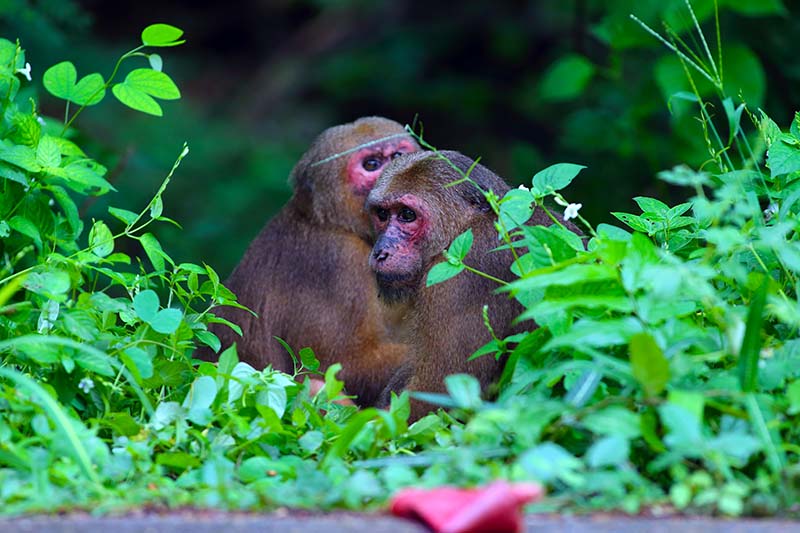2-minute read
Humans are innately skilled at choosing the right object for the task at hand. We’re able to comprehend that using a banana to hammer a nail or a colander to serve coffee won’t end in a good result. Primates are also capable of using objects as tools, but how do they decide which object will help to achieve their goal? What do they understand about how the world works?
Harvard scientists researching the evolution of knowledge in New World primates studied cotton-top tamarins (Saguinus oedipus) in captivity to determine how they perceive what makes an object useful as a tool to acquire food. Presented with the challenge of obtaining a food pellet using one of two hooks, the tamarins consistently chose the one that would provide the easiest access with as little modification as possible. The primates perceived that a change in a hook’s color and texture was irrelevant to the task, but a change in size or shape could mean the difference between snack versus no snack. The tamarins seemed to understand which object worked best as a tool and which design features affected functionality. Clever cotton-tops!
Scientists believe that tool use is more likely to emerge in primate species like tamarins that rely on embedded food sources to survive. While the Harvard study provided new insight into tamarin tool use for snack acquisition in captivity, understanding how the animals obtain food in their natural habitat is critical to their conservation in a world undergoing rapid environmental change.
In July 2020, researchers observing primates in São Paulo, Brazil published the first record of spontaneous tool use in the wild by a member of one of the most endangered primate species on the planet—the black lion tamarin (Leontopithecus chrysopygus). The squirrel-sized, luxuriously maned tamarins live in Morro do Diabo State Park in the coastal Atlantic Forest and depend on a diet of tree gum, fruit, and protein-rich insects. According to the new research, like its captive cotton-top cousins, the black lion tamarin seemed to instinctively know which object worked best to extract food, using a small sharp stick to harvest bugs from hard-to-reach places under tree bark. That’s pretty impressive, given that the mini-monkeys don’t have opposable thumbs!
Despite their penchant for problem-solving, tamarins can’t prevent the ongoing loss of their rainforest habitat. Threatened by the double-whammy of deforestation and climate change, the black lion tamarin was believed to be extinct until 1972. There are now only about 1000 of the rare animals left. The Atlantic Forest, where black lion tamarins make their home alongside 21 other primate species, 260 amphibians, 138 mammals, and 6000 plant species, is one of the most biodiverse ecosystems on our planet, but only 7% remains. Although the Atlantic Forest has been designated as one of the critical regions on Earth by the World Wildlife Fund and is listed as a World Heritage Site, it is still under threat.
You can learn about efforts to save the Atlantic Forest and all of its inhabitants from WWF. And if you’re especially interested in primates, you can get more info about the masterful monkey ways of cotton-top and black lion tamarins, as well as other highly intelligent species from the New England Primate Conservancy.
Oh, and don’t forget to participate in the annual celebration of successful food acquisition in the wild—Fat Bear Week. You can cast your vote for the best representative of brown bear plumpitude through October 6.




















































